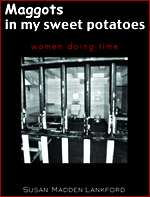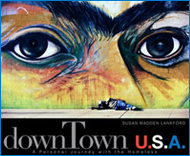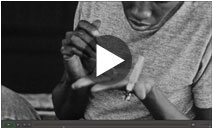HUMANE EXPOSURES films is proud to announce that It’s More Expensive to Do Nothing, our documentary about the flaws in our penal system and their possible solutions, has taken second place at the Bayou City Inspirational Film Festival (BCIFF) in Houston, TX.
We would like to thank everyone who has attended the festival, and everyone who has shown us support so far! Each one of you is an important part of the process as we work towards change, so thank you all!
The BCIFF is presented by the PROGRESS Arts Group, a nonprofit arts and education organization. Here is a little bit about the festival:
The Bayou City Inspirational Film Festival (BCIFF) was founded by its executive director, Shanda Davis, to showcase diverse film and video projects that:
* Educate and enlighten us on political, social, psychological, economic, health, religious, and a variety of other issues,
* Offer hope and encouragement as well as inspire us to contribute towards the betterment of society and
* Display positive relationships, morals, individual, and family values.
The Bayou City Inspirational Film Festival’s mission is:
* To provide a viable platform for independent filmmakers and artists from around the world to showcase their works,
* To provide awareness to the world about the variety of educational, inspirational and positive works available and the need to integrate more of these types of works into society,
* To provide a networking platform for filmmakers and industry professionals and
* To showcase the artistic excellence of children & youth in Houston and surrounding areas and provide scholarships to assist them in furthering their arts education.
For those of you who have yet to see the film, here is the trailer:
If our film hit home, or even if you just have an interest in this issue, please take a moment and share it with a few of your friends. The wider audience we can reach the better chance we have of not only alleviating the trials of those stuck in the vicious cycle, but also doing it in a way that reduces the cost to society and government. It truly is much more expensive to do nothing!
Source: “The Bayou City Inspirational Film Festival,” BCIFF Website
Image copyright Susan Madden Lankford, from the HUMANE EXPOSURES films documentary “It’s More Expensive to Do Nothing.” Used with permission.
Visit Us on Facebook: Humane Exposures Publishing, downTownUSA, Maggots in My Sweet Potatoes, It’s More Expensive To Do Nothing.

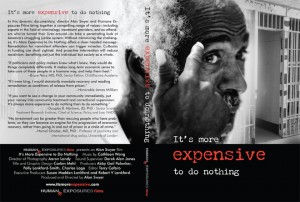

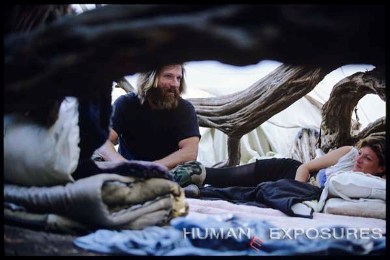 Here at HUMAN
Here at HUMAN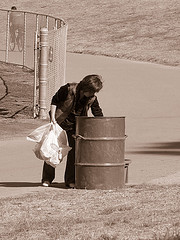 We live in an amazing age, the age of information, which has a direct and palpable impact upon the issues we try to address. One great example is homelessness, a major focus of the works we produce. Not only is social media an excellent tool for educating the populace about the problem, but it can also give a voice to those who are experiencing it.
We live in an amazing age, the age of information, which has a direct and palpable impact upon the issues we try to address. One great example is homelessness, a major focus of the works we produce. Not only is social media an excellent tool for educating the populace about the problem, but it can also give a voice to those who are experiencing it. HUMAN
HUMAN The campus of Vista Del Mar Child and Family Services last Wednesday was the epicenter of an enormous change for California. Governor Schwarzenegger performed a ceremonial signing of Assembly Bill 12, a bill that will keep foster care kids from aging out of the system when they turn 18. Schwarzenegger called the idea of taking care of oneself at 18 “ludicrous.”
The campus of Vista Del Mar Child and Family Services last Wednesday was the epicenter of an enormous change for California. Governor Schwarzenegger performed a ceremonial signing of Assembly Bill 12, a bill that will keep foster care kids from aging out of the system when they turn 18. Schwarzenegger called the idea of taking care of oneself at 18 “ludicrous.” Most people just walk right by the homeless. People living on the street are often viewed as the detritus of society, failed lives with no potential for betterment. Not to say that everyone feels this way, but there is a large segment of the population that does.
Most people just walk right by the homeless. People living on the street are often viewed as the detritus of society, failed lives with no potential for betterment. Not to say that everyone feels this way, but there is a large segment of the population that does.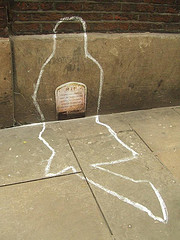 It was not all that long ago that we wrote about a
It was not all that long ago that we wrote about a  Mark Allen Johnson started shooting images in 2003. Since then, he has done photography for a stunning array of clients including Newsweek, Time, The New York Times, Marie Claire, The Economist, and VIBE. In addition he, like all photographers, pursues his own projects. It is one of those we’d like to speak of today: Pregnant in Prison.
Mark Allen Johnson started shooting images in 2003. Since then, he has done photography for a stunning array of clients including Newsweek, Time, The New York Times, Marie Claire, The Economist, and VIBE. In addition he, like all photographers, pursues his own projects. It is one of those we’d like to speak of today: Pregnant in Prison. An oft recurring theme on the HUMAN
An oft recurring theme on the HUMAN




